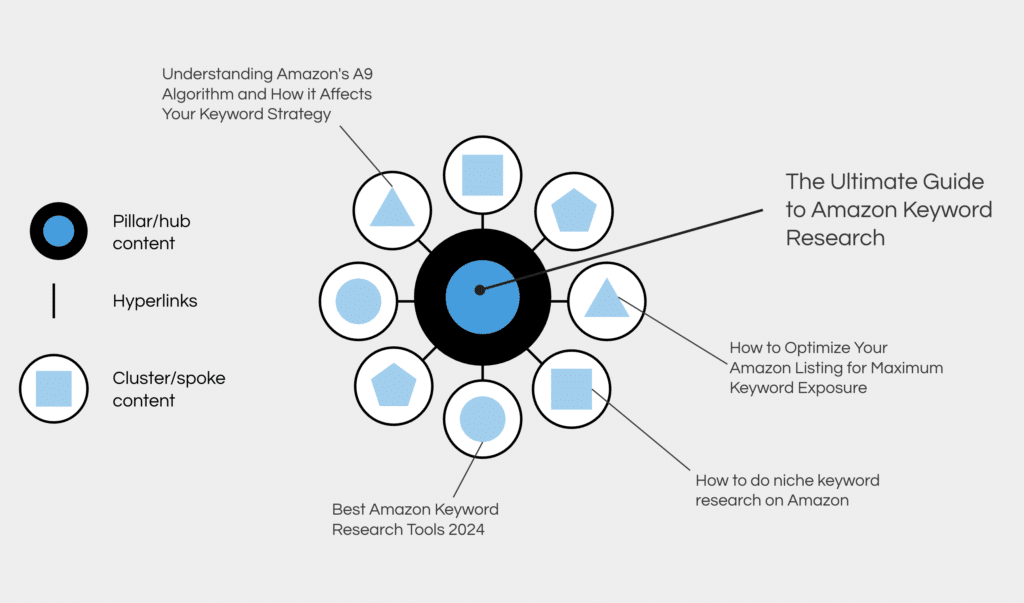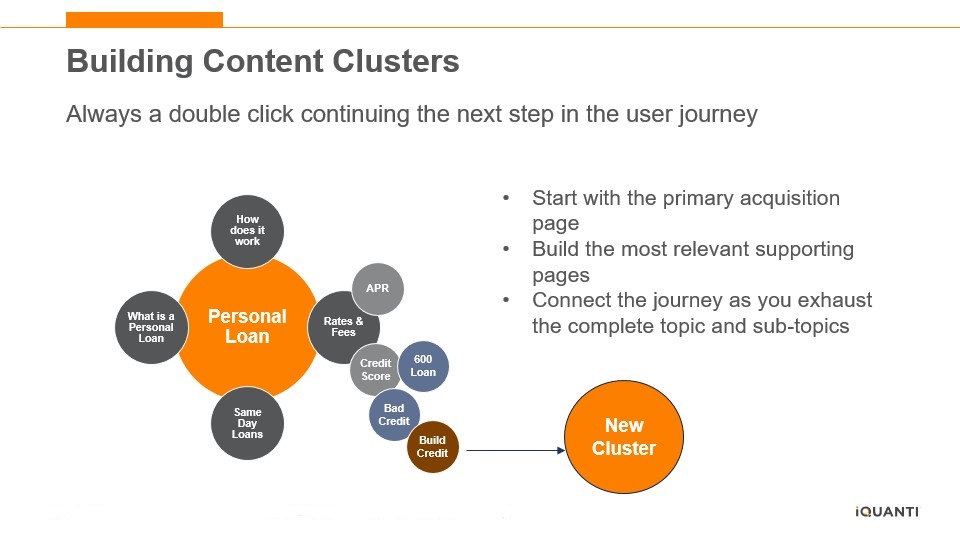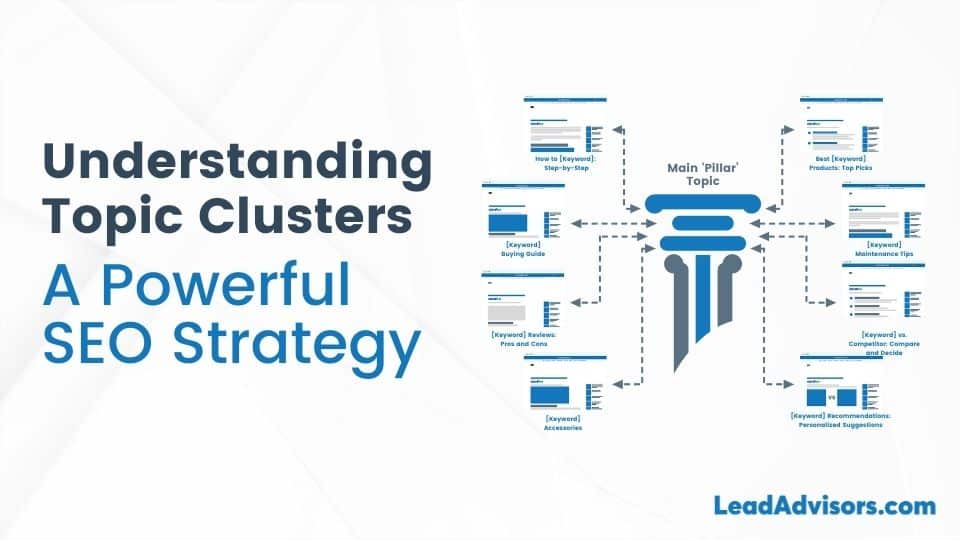Unlock the power of SEO with topic clusters! Learn how to boost your website’s visibility and drive traffic like never before.

Image courtesy of via DALL-E 3
Table of Contents
Introduction to Topic Clusters
When it comes to creating an effective SEO strategy, understanding the concept of topic clusters is essential. Topic clusters are a way of organizing content on your website to improve your search engine ranking and provide a better user experience. In this article, we will delve into what topic clusters are and why they are crucial for SEO success.
What Are Topic Clusters?
Topic clusters involve grouping together related content on a specific subject matter. They consist of a pillar content piece – a comprehensive guide or overview of the main topic – and cluster content, which includes more detailed articles or blog posts that cover subtopics related to the main theme. This organizational structure helps search engines understand the relevance and depth of your content, ultimately boosting your website’s visibility in search results.
Why Are Topic Clusters Important?
Topic clusters offer several benefits for your website’s SEO strategy. By creating a network of interconnected content, you establish topical authority, which signals to search engines that your site is an authoritative source on a particular subject. This, in turn, can lead to higher search engine rankings and increased organic traffic. Additionally, topic clusters help users navigate your site more easily, as they can explore a range of related topics seamlessly. Ultimately, implementing topic clusters can enhance the overall user experience and strengthen your website’s online presence.
Core Components of a Topic Cluster
In order to build an effective topic cluster for SEO purposes, it is essential to understand the core components that make up this strategy. By breaking down the essential parts of a topic cluster, you can create a well-structured and organized content framework that search engines love. Let’s delve into the key elements:
Pillar Content
At the heart of every topic cluster lies the pillar content. This main piece of content serves as the foundational cornerstone that supports the entire cluster. Think of it as the main topic or overarching theme that you want to rank for in search engines. Pillar content is usually broad and comprehensive, providing a high-level overview of the subject matter.
Cluster Content
Cluster content, on the other hand, consists of more specific and detailed articles that revolve around the pillar content. These pieces of content delve deeper into subtopics related to the main theme, providing valuable information and insights for your audience. Cluster content helps to expand on the main topic and establish your website’s authority on the subject.
Internal Linking
Internal linking plays a crucial role in connecting the pillar content with cluster content within a topic cluster. By strategically linking related articles together, you create a network of interconnected content that enhances the user experience and allows search engines to crawl and index your website more effectively. Internal links help to establish the relevance and hierarchy of your content, making it easier for both users and search engines to navigate your site.
Choosing a Pillar Topic
Before selecting a pillar topic for your topic cluster, it’s crucial to understand who your audience is. Think about what interests them, what problems they may be facing, and what information they are seeking. By knowing your audience well, you can tailor your content to meet their needs effectively.

Image courtesy of ahrefs.com via Google Images
Selecting a Broad Topic
When choosing a pillar topic, opt for a broad subject that can be divided into smaller subtopics. This broad topic should be relevant to your audience and allow for a diverse range of content ideas. For example, if your website is about healthy living, your pillar topic could be “Nutrition Tips for a Balanced Lifestyle.” This overarching theme can then be dissected into specific subtopics like “Superfoods,” “Meal Prep Hacks,” and “Healthy Snack Ideas.”
Creating Cluster Content
In order to build a strong topic cluster for your website, it’s essential to create relevant and detailed cluster content around the selected pillar topic. Let’s dive into the process of developing cluster content that will enhance your SEO strategy.
Identifying Relevant Subtopics
When creating cluster content, start by identifying subtopics that are closely related to your main pillar topic. These subtopics should provide additional insights and information that expand on the core theme. Consider what your audience would be interested in learning more about and how you can address their needs through these subtopics.
Conducting Keyword Research
Keyword research plays a crucial role in crafting effective cluster content. By understanding the search terms and phrases that your target audience is using, you can optimize your content to align with their queries. Use tools like Google Keyword Planner or SEMrush to identify relevant keywords that will help drive organic traffic to your website.
Writing Detailed Articles
When creating cluster content, focus on writing detailed and comprehensive articles that cover the subtopics in depth. Provide valuable insights, practical tips, and relevant examples to engage your readers and keep them on your site longer. By offering high-quality content that addresses the needs of your audience, you can establish authority in your niche and attract more organic traffic to your website.
Organizing Your Topic Cluster
When it comes to creating topic clusters for effective SEO, organization is key. By structuring your content in a logical and user-friendly way, you can maximize the impact of your topic cluster and improve the overall user experience. In this section, we’ll dive into how to organize your topic cluster to ensure it’s structured for success.

Image courtesy of www.keywordinsights.ai via Google Images
Building a Clear Structure
Before diving into creating content for your topic cluster, it’s essential to establish a clear structure. Start by outlining the main pillar content and identifying the related cluster content that will support it. Organize your subtopics in a coherent manner that allows for easy navigation and understanding.
By creating a well-defined structure for your topic cluster, you make it easier for users to navigate your website and find the information they’re looking for. This not only enhances the user experience but also signals to search engines that your content is organized and relevant to the main topic.
Enhancing User Experience
Organizing your topic cluster effectively goes hand in hand with enhancing the user experience. When users can easily find the information they need and navigate between related topics, they are more likely to stay on your site longer and engage with your content.
A well-organized topic cluster also helps build credibility and trust with your audience. When users see that your content is structured in a logical and coherent way, they are more likely to view your site as a reliable source of information. This positive user experience can lead to increased engagement, repeat visits, and ultimately, improved SEO performance.
Implementing Internal Linking
Internal linking is like creating a network of tunnels within your website, connecting different rooms (pages) to help visitors navigate seamlessly. Let’s explore how to implement internal linking effectively within your topic cluster to improve user experience and boost SEO.
Creating Effective Hyperlinks
When adding internal links, make sure they are relevant to the content and provide additional value to the reader. Use descriptive anchor text that clearly indicates where the link leads to, rather than generic phrases like “click here.”
Improving Site Navigation
Internal links not only guide users to related content but also help search engines crawl your site more effectively. By strategically linking pages within your topic cluster, you can create a logical path for users to explore various aspects of the topic.
Boosting SEO with Internal Links
Search engines like Google consider internal linking when determining the relevance and authority of your website. By interlinking relevant pages within your topic cluster, you can signal to search engines the significance of those pages, potentially improving your SEO ranking.
Monitoring and Updating Topic Clusters
Tracking the performance of your topic clusters is crucial to understanding how well they are resonating with your audience and performing on search engines. By using SEO metrics such as organic traffic, click-through rates, and keyword rankings, you can gain valuable insights into the effectiveness of your topic clusters. Tools like Google Analytics and SEMrush can help you track and analyze these metrics.

Image courtesy of www.searchenginejournal.com via Google Images
Updating Content Regularly
Regularly updating your topic clusters is essential to maintaining their relevancy and ensuring continued success. Search engines favor fresh and up-to-date content, so it’s important to refresh your pillar content and cluster content periodically. By adding new information, expanding on existing topics, and incorporating the latest trends, you can keep your topic clusters engaging and valuable to your audience.
The Benefits of Using Topic Clusters
Topic clusters can significantly boost your website’s ranking on search engines like Google. When you create a comprehensive network of interlinked content around a central pillar topic, search engines recognize your site as a valuable resource. This signals to search engine algorithms that your website is an authority on the subject, resulting in higher rankings for relevant search queries.
Increasing Website Traffic
By implementing topic clusters, you can attract more visitors to your website. When users search for information related to your pillar topic or specific subtopics within your cluster, they are more likely to find your content due to the interconnected nature of the cluster. This increased visibility drives organic traffic to your site, ultimately expanding your audience reach.
Conclusion
In conclusion, topic clusters are a vital component of a successful SEO strategy. By organizing content around a pillar topic and creating detailed cluster content, websites can improve their search engine rankings and provide a better user experience. Understanding your audience, conducting keyword research, and implementing internal linking are all essential elements of building effective topic clusters.

Image courtesy of leadadvisors.com via Google Images
Remember, topic clusters help websites not only with SEO but also with content organization and overall user engagement. By following the steps outlined in this guide, you can create a structured and informative topic cluster that will benefit both your website and your audience.
Want to turn these SEO insights into real results? Seorocket is an all-in-one AI SEO solution that uses the power of AI to analyze your competition and craft high-ranking content.
Seorocket offers a suite of powerful tools, including a Keyword Researcher to find the most profitable keywords, an AI Writer to generate unique and Google-friendly content, and an Automatic Publisher to schedule and publish your content directly to your website. Plus, you’ll get real-time performance tracking so you can see exactly what’s working and make adjustments as needed.
Stop just reading about SEO – take action with Seorocket and skyrocket your search rankings today. Sign up for a free trial and see the difference Seorocket can make for your website!
Frequently Asked Questions (FAQs)
What If My Site Is Small?
If your site is small, you can still benefit from using topic clusters. Start by selecting a main topic that is relevant to your audience and can be divided into smaller subtopics. Focus on creating quality pillar content and cluster content that provide valuable information to your users. Internal linking within your topic cluster can help improve navigation and user experience even on a smaller website.
How Often Should I Update My Topic Clusters?
It is recommended to update your topic clusters regularly to maintain their effectiveness. Monitoring the performance of your topic clusters using SEO metrics can help you identify when updates are needed. By keeping your content fresh and relevant, you can continue to attract visitors and improve your search engine rankings.
Can Topic Clusters Help All Types of Websites?
Topic clusters can be beneficial for various types of websites, regardless of their size or industry. By organizing your content around main topics and related subtopics, you can improve your website’s structure and help search engines understand the relevance of your content. Whether you run a blog, an e-commerce site, or a news platform, implementing topic clusters can enhance your SEO strategy and attract more traffic to your site.







